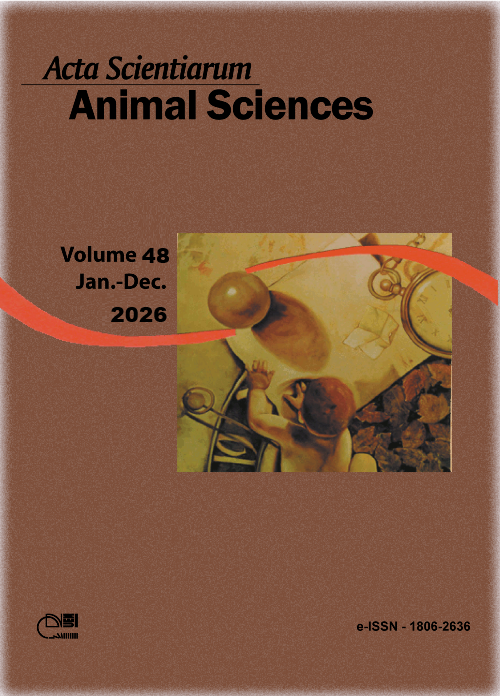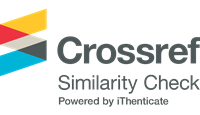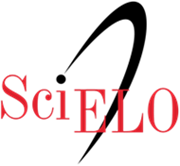Effect of pollination on the viability of passion fruit seeds
Abstract
Seed propagation is the most used method for producing yellow passion fruit seedlings (Passiflora edulis f. flavicarpa); however, the success and uniformity of seedling formation are influenced by the germination process. This study aims to evaluate the influence of light and different pollination conditions on the quality of passion fruit seeds and seedlings. The experiment was conducted in two stages, both arranged in a completely randomized design (CRD): In the first stage, two treatments were used to determine the optimal light conditions for the germination of Passiflora edulis seeds obtained from fruits formed through manual cross-pollination (MCP). In the second stage, the effects of different pollination conditions on seed germination and seedling development were evaluated. The variables analyzed included germination rate, mean germination time, germination speed index, total seedling length, shoot length, root length, and fresh and dry biomass. The results indicated that the absence of light promotes a higher germination rate and a shorter mean germination time for P. edulis seeds. Flowers subjected to manual cross-pollination (MCP) and free visitation without pollen thieves (FVWT) resulted in higher germination rates and shorter germination times. The presence of thieves caused a 31% reduction in seed germination but did not affect seedling development.
Downloads
References
Alexandre, R. S., Wagner Júnior, A., Negreiros, J. R. S., Parizzotto, A., & Bruckner, C. H. (2004). Seed germination of passion fruit genotypes. Pesquisa Agropecuária Brasileira, 39(12), 1239-1245. https://doi.org/10.1590/S0100-204X2004001200011
Alvarenga, M. A. R. (2013). Tomato: field production, greenhouse and hydroponics. UFLA.
Ariizumi, T., Shinozaki, Y., & Ezura, H. (2013). Genes that influence yield in tomato. Breeding Science, 63(1), 3-13. https://doi.org/10.1270/jsbbs.63.3
Brasil. (2009). Regras para análise de sementes. Mapa.
Cardoso, A. I. I. (2007). Produção de pimentão com vibração das plantas. Ciência e Agrotecnologia, 31(4),1061-1066. https://doi.org/10.1590/S1413-70542007000400018
Carvalho, N. M., & Nakagawa, J. (2000). Beneficiation. In M. N. Carvalho, & J. Nakagawa (Eds.), Seeds: science, technology and production (pp. 416-457). Funep.
Carvalho, J. R., Setubal, J. W., Sousa, R. L., Mota, P. R. D’., Alves, T. N., Silva, V. B., & Assis, H. J. (2020). Okra cultivars under different pollinations and their effects on the physical and physiological quality of seeds. Brazilian Journal of Development, 6(12), 94728-94738. https://doi.org/10.34117/bjdv6n12-090
Castellane, P. D (1980). Produção de sementes de cenoura (Daucus carota L.). In J. J. V. Muller, & V. W. D. Casali (Eds.), Seminários de horticultura (Vol. 1, pp. 36-76). UFV.
Cruz, D. O., Freitas, B. M., Silva, L. A., Silva, E. M. S., & Bomfim, I. G. A. (2005). Pollination efficiency of the stingless bee Melipona subnitida on greenhouse sweet pepper. Pesquisa Agropecuária Brasileira, 40(12), 1197- 1201. https://doi.org/10.1590/S0100-204X2005001200006
Fidalgo, A. O., Cécel, A. T., Mazzi, J. F. O., & Barbedo, C. J. (2018). Pollination and quality of seeds and plantlets of Eugenia uniflora L. Hoehnea, 46(1),e052018. https://doi.org/10.1590/2236-8906-05/2018
José, S. C. B. R., Salomao, A. N., Melo, C. C., Cordeiro, I. M., & Gimenes, M. A. (2019). Tratamentos pré-germinativos na germinação de sementes de maracujás silvestres (Boletim de pesquisa e desenvolvimento, 351). Embrapa.
Lopes, J. C., & Soares, A. S. (2003). Germination of Miconia cinnamomifolia (Dc.) Naud seeds. Brasil Floresta, 21(75), 31-38.
Marcos-Filho, J. (2005). Fisiologia de sementes de plantas cultivadas. Fealq.
Meletti, L. M. M., Furlani, P. R., Álvares, V., Soares-Scott, M. D., Bernacci, L. C., & Azevedo Filho, J. A. (2002). Novas tecnologias melhoram a produção de mudas de maracujá. O Agronômico, 54(1), 30-33.
Nascimento, W. M., Gomes, E. M. L., Batista, E. A., & Freitas, R. A. (2012). Influence of pollinators on seed production and quality of carrot and sweet pepper in a greenhouse. Brazilian Horticulture, 30(3), 494-498. https://doi.org/10.1590/S0102-05362012000300023
Nunes-Silva, P., Hrncir, M., Silva, C. I., Roldao, Y. S., & Imperatriz-Fonseca, V. L. (2013). Stingless bees, Melipona fasciculata, as eficientes pollinators of egg plant (Solanum melongena) in greenhouses. Apidologie, 44(5), pp. 537-546. https://doi.org/10.1007/s13592-013-0204-y
Santos, C. E. M,; Morgado, M. R., Matias, A. W., & Bruckner, C. J. (2015). Germination and emergence of passion fruit (Passiflora edulis) seeds obtained by self – and open – pollination. Acta Scientiarum. Agronomy, 37(4), 489-496. https://doi.org/10.4025/actasciagron.v37i4.19616
Silva, R. F. (2000). Extraction of seeds from fleshy fruits. In: N. M. Carvalho, & J. Nakagawa (Eds.), Seeds: science, technology and production (pp. 458-484). Funep.
Silva, A. L., Hilst, P.C., Dias, D.C.F.S., & Rogalski, M. (2013). Overcoming seed dormancy of Passiflora elegans Mast. (Passifloraceae). Revista Verde, 14(3), 406-411. https://doi.org/10.18378/rvads.v14i3.6552
Witter, S., & Blochtein, B. (2003). Effect of pollination by bees and other insects on onion seed production. Brazilian Agricultural Research, 38(12), 1399-1407. https://doi.org/10.1590/S0100-204X2003001200006
Zucareli, V., Ferreira, G., Amaro, A. C. E., & Araújo, F. P. (2009). Photoperiod, temperature and plant regulators in Passiflora cincinnata Mast seed germination. Revista Brasileira de Sementes, 31(3), 106-114. https://doi.org/10.1590/S0101-31222009000300012
Zucareli, V., Henrique, L. A. V., & Ono, E. O. (2015). Influence of light and temperature on the germination of Passiflora ircarnata L. seeds. Journal of Seeds Science, 37(2), 162-167. https://doi.org/10.1590/2317-1545v37n2147082
Copyright (c) 2026 Zilda Cristina Malheiros Lima, Priscila Silva Miranda, Raquel Perez-Maluf, Aldenise Alves Moreira, Débora Leonardo dos Santos

This work is licensed under a Creative Commons Attribution 4.0 International License.
DECLARATION OF ORIGINALITY AND COPYRIGHTS
- I Declare that current article is original and has not been submitted for publication, in part or in whole, to any other national or international journal.
The copyrights belong exclusively to the authors. Published content is licensed under Creative Commons Attribution 4.0 (CC BY 4.0) guidelines, which allows sharing (copy and distribution of the material in any medium or format) and adaptation (remix, transform, and build upon the material) for any purpose, even commercially, under the terms of attribution.
Read this link for further information on how to use CC BY 4.0 properly.








































